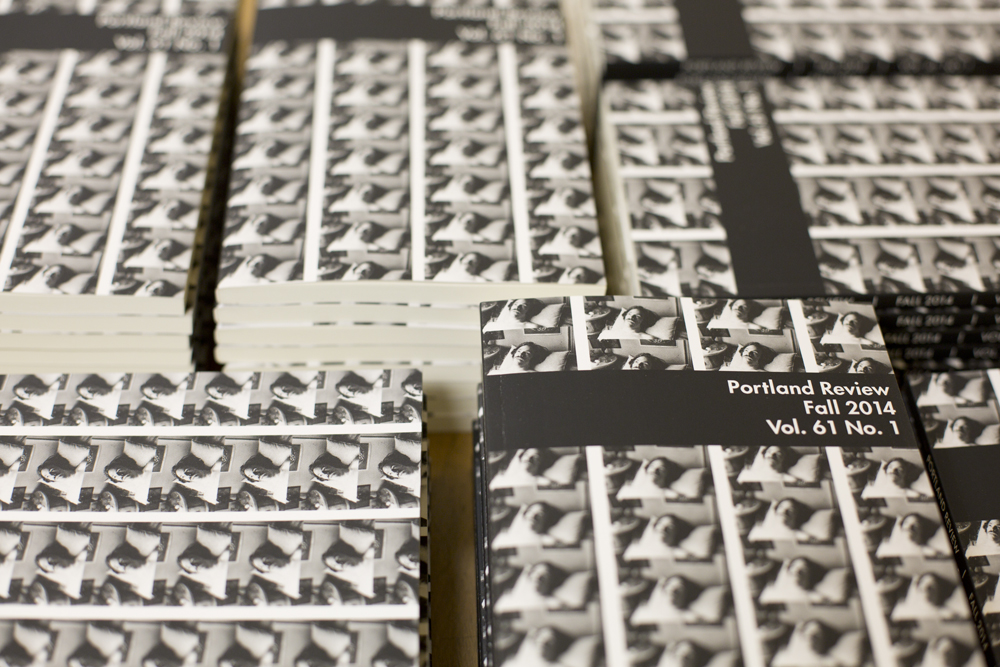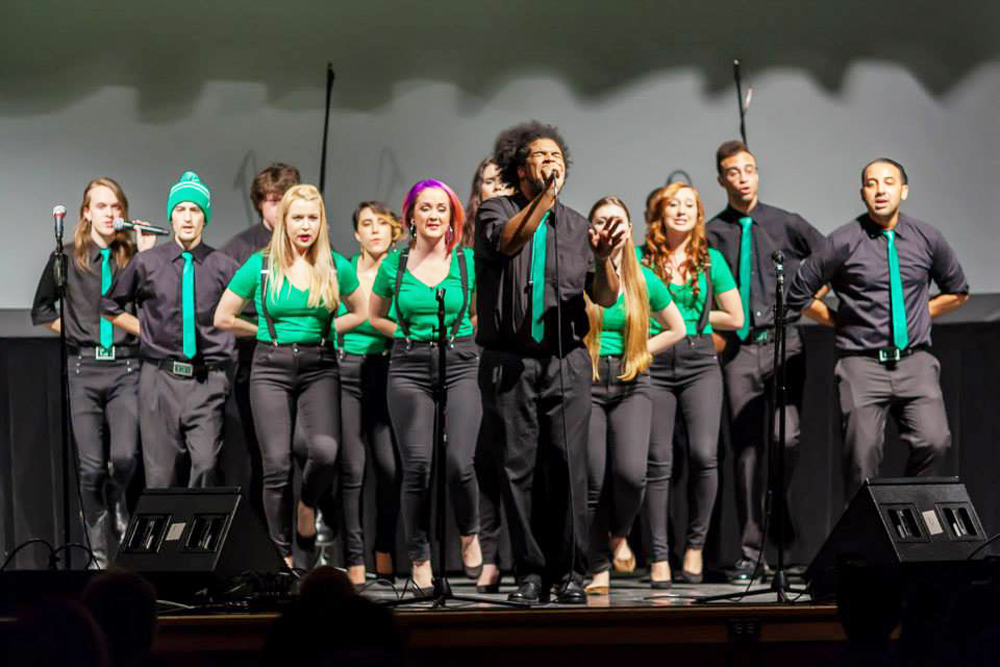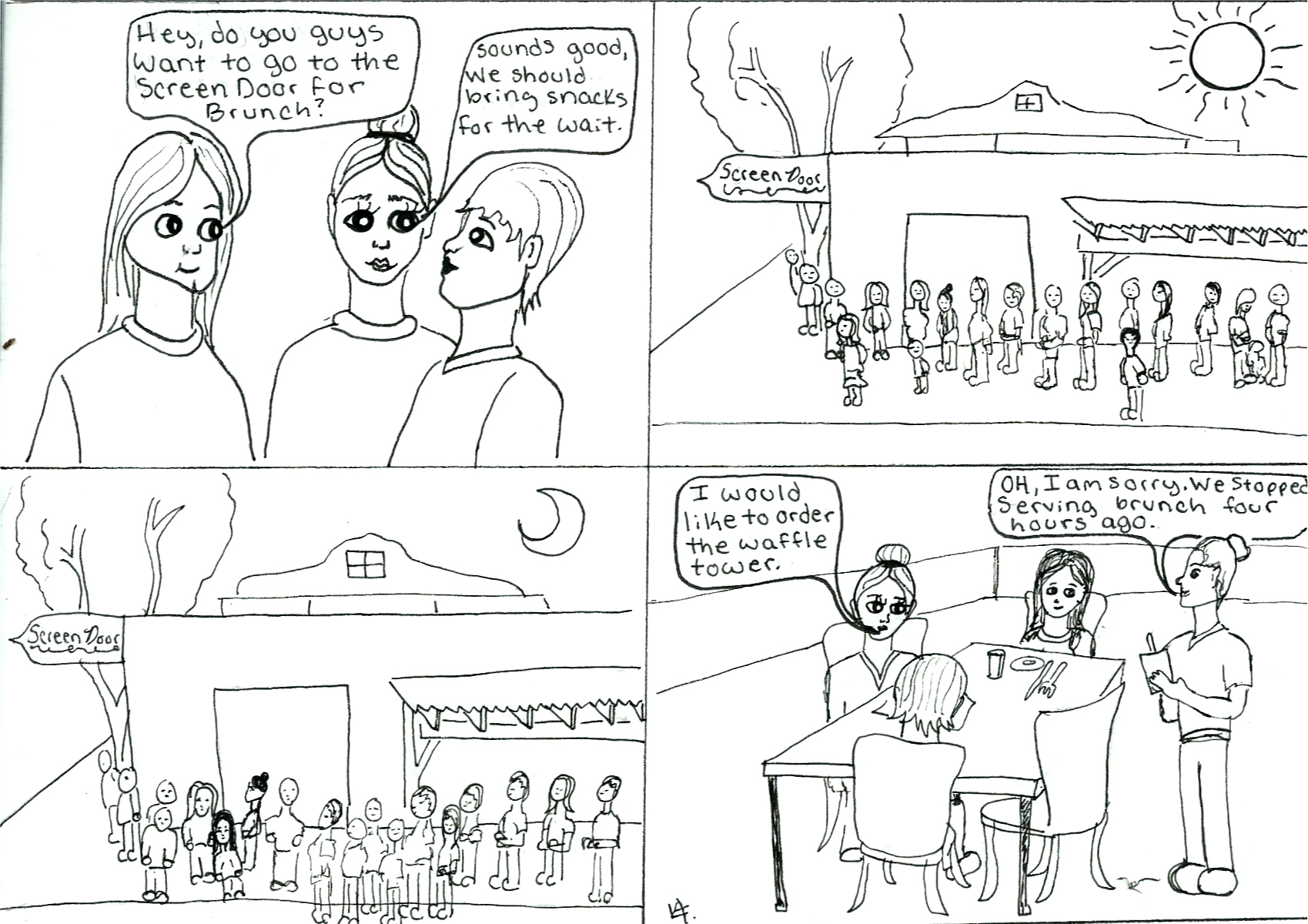Portland Review, the university literary journal, celebrated their first quarterly release of the school year at Ford Food & Drink on Nov. 14. The journal is presently available for $12, and a yearly subscription costs $30.
The Review has been publishing local and national writing and art since 1956, and includes genres such as poetry, fiction and nonfiction. The art included in the Review varies, and can be anything from digital art and ink illustrations to photography.
Alex Dannemiller, editor-in-chief of Portland Review, said the Fall 2014 issue carries nonfiction pieces from all over the world, including Chicago, Dar es Salaam in Tanzania and as close as Washington.
Most literary journals base each of their issues around a central theme. Dannemiller said there is no central theme to their most recent issue.
“While not intentional, there are a lot of shared themes about identity and what surrounds it, such as culture, race and sense of place,” Dannemiller said. “There are works that explore names, defending the character of the speaker, and deal with death of family and strangers.”
Even the forms of the writing are varied and distinct. While older forms of media, such as literary journals, are susceptible to stagnation and loyalty only to more traditional forms of writing, Portland Review doesn’t hesitate to print flash fiction or writing that straddles the line between poetry and prose.
This issue includes a wide array of art, too—paintings, sculptures and photos that strike, weigh down, startle and calm. Such pieces include a rubber Jesus rescued from a vending machine (Amy Leach), to a photo of a grainy, old house put in great relief by some mysterious light (Christopher Woods), to a digital illustration of disquieting ruins in the woods (Joshua “Skull” Dixon).
The release party hosted three different authors who contributed to the journal. Sasha LaPointe, of Nooksack tribal heritage, a poet and nonfiction writer from Seattle, read “Blood Running,” an essay linked to a larger project with the same themes.
LaPointe explored the parallels between her own experiences and those of her female relatives and ancestors as indigenous women facing colonization and historical trauma.
LaPointe’s great aunt was married to a Scottish man, who married her only because he could exploit the marriage and her land.
The whole ordeal was wildly emotionally abusive, with LaPointe’s great aunt forced to live in a shack behind the house that the man had built. LaPointe describes her essay as a story that “goes back and forth between my life and hers, and links historical trauma with today.”
The second piece LaPointe read was an excerpt from a larger project she’s creating: A memoir of her time living on a reservation. Very recently, LaPointe returned to the trailer her family had lived in after 20 years of it being left abandoned.
LaPointe delved into what happens to a place after 20 years, and what LaPointe referred to as the “strange structure nature makes.” She’s been published by Us, a journal for indigenous women, and was recently hired as an intern for Copper Canyon, a nonprofit publisher.
Edie Rylander, a writer and poet from Portland, read her poem that was published in the Review, as well as a few excerpts from a project she’s also working on called “The Farmer’s Daughter.”
When completed, the latter will be a series of vignettes, all of which take place in a small town struck by tragedy after tragedy. The narrator is another citizen of the town, well-informed, but in no way omniscient.
Rylander has been published in Black Heart Magazine, Nailed Magazine, Gobshite Quarterly and will have a story of hers published in a collection of stories called The Untold Gaze, which will be coming out next year.
Kelsey Camacho read a poem entitled “What the Sky Tells Us” and a personal essay, “Lake Lot.” Both involve Camacho returning to places important in her past, like the spot next to a radio tower where she would stargaze with a friend, and the lot near her childhood home that she and her friends frequently visited.
Camacho admitted to struggling with living in the past, and that these works are a way of immortalizing these moments in her life and exploring why she needs to do so. She has her bachelor’s degree in English and creative writing from Elon University, and worked as a nonfiction editor for Colonnades, the arts and literary journal at Elon.







